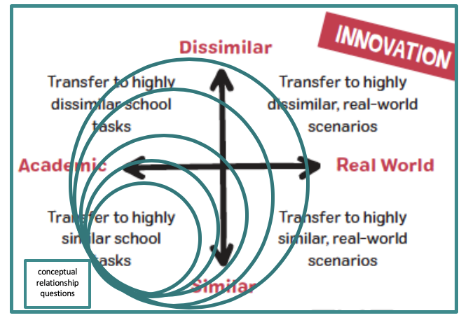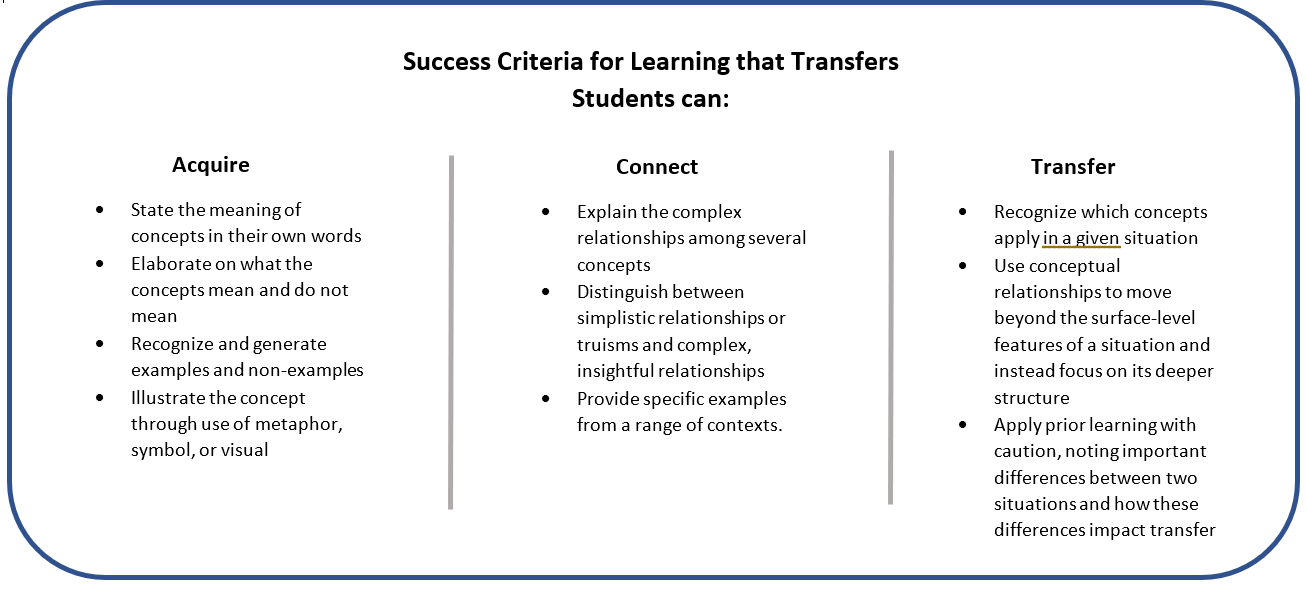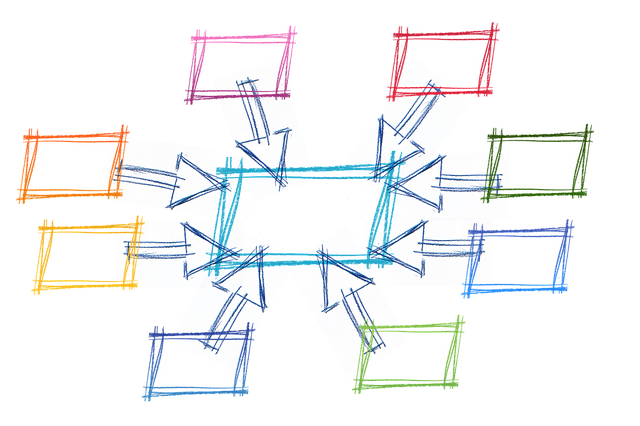Path 1: Learning That Transfers - Acquire, Connect, Transfer
The ever-changing complexity of our world requires learners to develop "big picture" thinking. To promote a deep understanding of the world, we must create purposeful learning opportunities that promote a deep transfer of learning regardless of place, time and situation. Developing conceptual understandings allow students the ability to recognize patterns and make authentic connections between the learning and purpose.
Watch this brief video
Conceptual Understanding and Learning Transfer by Julie Stern. (~3 minute)
- Module 1: Acquire
-
“The first step in teaching for transfer is helping students understand the most important organizing concepts in each discipline and ensuring that they use these concepts to categorize key details of their learning.” p 11
Identifying key concepts of learning, rather than standards
- Concepts are the means to learning/understanding; meeting standards are the results
What is a concept? View this video to learn more about concepts from Julie Sterns (~ 7 minutes)
Reviewing/revising lessons to accentuate key concepts
- Concept Samples from Julie Sterns: https://docs.google.com/document/d/1vCuOiwTX7VcdZJUmXqhdkWA7FXo97if1ndb4GeOygm0/view
Organizational structure of learning
- Look over a unit of study and consider the key concepts, start with the standards as Julie suggests in the video to identify the key concepts
- How do key concepts connect multiple content area standards to help deepen student learning?
- Links to MLRs
- Criteria for Prioritizing Standards: https://docs.google.com/presentation/d/17XDPJIeh1VwMNBvQuQ9IGYzhfBUJU6c9tB6pU_D7O6c/template/preview
- Unit Planning resources/templates: https://learningthattransfers.com/chapter-6-resources/
- Acquire strategies: https://docs.google.com/document/d/1Py_iwpYx_eH2euwPDV-_vz-joNH4CB564mbKJZzgEyo/view
- What changes might you make?
- How might you better help students to understand the key concepts within and across the content areas?
- Module 2: Connect
-
“Once students understand certain concepts, teachers can pose simple questions about the relationship between those concepts.” p 15
Supporting students in building connections within and across concepts and content areas
- Connections are how students start to make meaning of their learning; meeting standards are the results
- How do we support students in making connections? View this video to learn more about connections from Julie Sterns (~ 3 minutes)
Reviewing/revising lessons to accentuate connections
- Types of Connections: https://docs.google.com/presentation/d/1cpnGasdJ_ru8M1BBTCEZJEVOOFzVrcFgfwDSaUX1U7o/edit#slide=id.gce45b4a365_0_0
- What connections do you see across the content areas?
- Look over a unit of study and consider the connections and what strategies and relationship questions you might incorporate.
- How might these strategies and relationship questions support connections across the content areas?
- Connect Strategies: https://docs.google.com/document/d/1IBjJDvjWVWywxejNiCGCamNil5RHxjazNudU8dI5RoM/edit
- Conceptual Relationship questions: https://docs.google.com/document/d/1og4DiPOBQuBr9JFDLO3aCA2S8ZeGNA-NNTUwGlQkhj8/edit
- What changes might you make?
- How might you better help students to make connections within and across the content areas?
- Module 3: Transfer
-
“The more we can coach students to apply general patterns and conceptual insights to dissimilar, real-world contexts, the more flexible and creative their problem-solving abilities will be, and the more primed they will be to innovate.” p 18
Setting the stage for learning transfer.
- Supporting students in transferring their learning
- There are different types of transfer that our students should know and be able to do to demonstrate their learning; meeting standards are the results
- How do we support students in transferring their learning? View this video to learn more about transfer from Julie Sterns (~ 5 ½ minutes)
Reviewing/revising lessons to accentuate connections
- Types of Transfer:
- Similar transfer: Applying learning to a different, but quite similar situation to the original learning context.
- Dissimilar transfer: Applying learning to a completely new scenario that is very different from the original learning context.

Organizational structure of learning
- Look over a unit of study and consider the types of transfer and what strategies and templates you might use in your planning.
- How might these types of transfer support learning across the content areas?
- Transfer strategies: https://docs.google.com/document/d/1d2nmOopQdJoSFad6wsxCkUD1KmW1z71y-FprwiBWknk/view
- Online Learning Template: https://docs.google.com/document/d/1piJwU5AFsXRG18mLHKMkDHNeWYlqqPHG7tCRZ4E1jgM/edit
- Unit Planning Resources: https://learningthattransfers.com/chapter-6-resources/
- What changes might you make?
- How might you better help students to make similar and dissimilar transfer within and across content areas?
- Supporting students in transferring their learning
- Wrap it Up
-
Success Criteria for Learning That Transfers

Now that you have completed Path 1: Learning That Transfers - Acquire, Connect, Transfer, please complete this short questionnaire to receive your contact hour certificate.
- Resources & Next Steps
-
Resources used to support the development of this professional learning opportunity:
- Learning That Transfers by Julie Stern: website and book
- Free chapter resources: https://learningthattransfers.com/chapter-resources/
- Learning That Transfers video from Julie Stern
